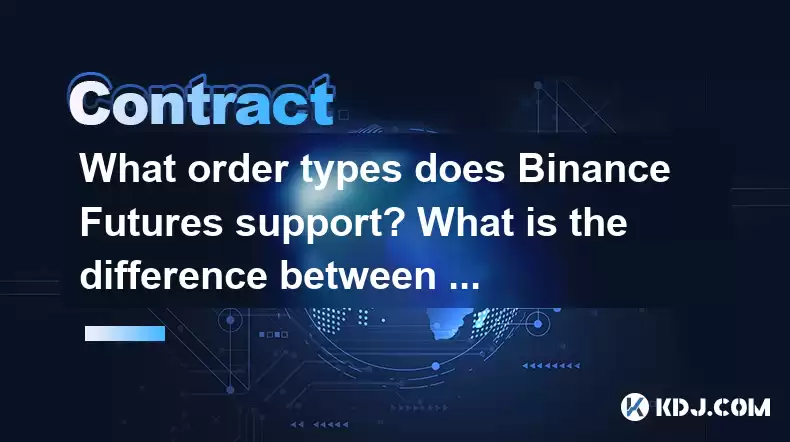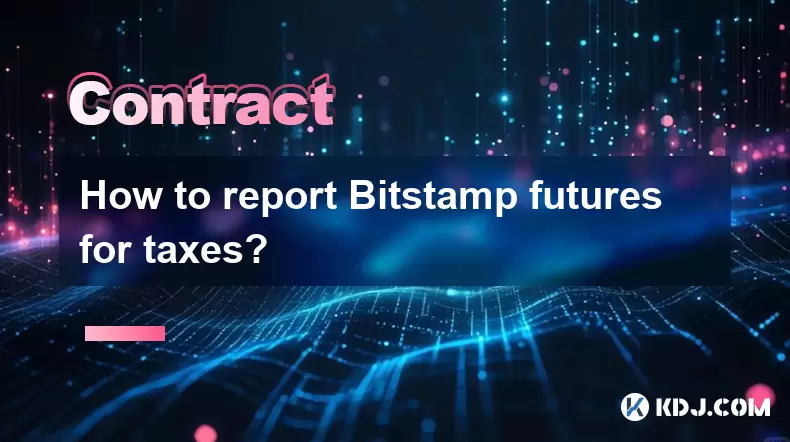-
 Bitcoin
Bitcoin $115000
0.12% -
 Ethereum
Ethereum $3701
4.50% -
 XRP
XRP $3.081
2.99% -
 Tether USDt
Tether USDt $0.0000
-0.01% -
 BNB
BNB $767.9
1.45% -
 Solana
Solana $169.5
3.13% -
 USDC
USDC $0.9999
0.01% -
 Dogecoin
Dogecoin $0.2106
4.30% -
 TRON
TRON $0.3334
1.62% -
 Cardano
Cardano $0.7564
2.54% -
 Stellar
Stellar $0.4165
0.76% -
 Hyperliquid
Hyperliquid $38.75
0.25% -
 Sui
Sui $3.593
3.00% -
 Chainlink
Chainlink $17.08
3.59% -
 Bitcoin Cash
Bitcoin Cash $573.6
4.35% -
 Hedera
Hedera $0.2508
-0.84% -
 Avalanche
Avalanche $23.07
6.46% -
 Ethena USDe
Ethena USDe $1.001
-0.02% -
 Litecoin
Litecoin $120.8
8.17% -
 UNUS SED LEO
UNUS SED LEO $8.943
-0.32% -
 Toncoin
Toncoin $3.400
-5.60% -
 Shiba Inu
Shiba Inu $0.00001255
1.54% -
 Uniswap
Uniswap $9.908
6.32% -
 Polkadot
Polkadot $3.718
2.10% -
 Monero
Monero $303.0
-0.74% -
 Dai
Dai $0.9999
-0.02% -
 Bitget Token
Bitget Token $4.392
0.91% -
 Cronos
Cronos $0.1403
6.31% -
 Pepe
Pepe $0.00001076
1.13% -
 Aave
Aave $267.2
1.80%
What order types does Binance Futures support? What is the difference between limit and market orders?
Binance Futures offers various order types like Limit, Market, Stop-Limit, Stop-Market, Trailing Stop, and Post-Only to suit different trading strategies and market conditions.
Apr 28, 2025 at 08:07 am

Binance Futures, one of the leading platforms for cryptocurrency derivatives trading, supports a variety of order types to cater to different trading strategies and needs. Understanding these order types is crucial for any trader looking to leverage the potential of futures trading on Binance. In this article, we will explore the different order types available on Binance Futures, with a particular focus on the differences between limit and market orders.
Introduction to Binance Futures Order Types
Binance Futures offers several order types, each designed to help traders execute their strategies effectively. The main order types include Limit Orders, Market Orders, Stop-Limit Orders, Stop-Market Orders, Trailing Stop Orders, and Post-Only Orders. Each of these order types serves a specific purpose and can be used in different market conditions and trading scenarios.
Limit Orders on Binance Futures
A Limit Order is an order to buy or sell an asset at a specified price or better. When you place a limit order, you set the maximum price you are willing to pay for a buy order or the minimum price you are willing to accept for a sell order. Limit orders are useful for traders who want to have more control over the price at which they enter or exit a position.
To place a limit order on Binance Futures:
- Navigate to the Binance Futures trading interface.
- Select the futures contract you want to trade.
- Click on the "Limit" order tab.
- Enter the price at which you want to buy or sell the contract.
- Specify the quantity of contracts you wish to trade.
- Review your order details and click "Buy/Long" or "Sell/Short" to submit the order.
Limit orders will only be executed if the market reaches the specified price or better. If the market does not reach your specified price, the order will remain open until it is either filled or canceled.
Market Orders on Binance Futures
A Market Order is an order to buy or sell an asset at the best available current market price. When you place a market order, you prioritize speed of execution over the price at which the order is filled. Market orders are useful for traders who want to enter or exit a position quickly, without waiting for a specific price.
To place a market order on Binance Futures:
- Navigate to the Binance Futures trading interface.
- Select the futures contract you want to trade.
- Click on the "Market" order tab.
- Specify the quantity of contracts you wish to trade.
- Review your order details and click "Buy/Long" or "Sell/Short" to submit the order.
Market orders are executed immediately at the best available price, which means they can be subject to slippage, especially in volatile markets.
Differences Between Limit and Market Orders
The primary difference between Limit Orders and Market Orders lies in the control over the execution price and the speed of execution.
Execution Price: With a limit order, you specify the exact price at which you want to trade. The order will only be filled if the market reaches that price or better. In contrast, a market order is filled at the best available price at the time of submission, which may not be the same as the price you see on the screen due to market movement and slippage.
Speed of Execution: Market orders are typically executed faster than limit orders because they do not require the market to reach a specific price. They are filled immediately at the current market price. Limit orders, on the other hand, may take longer to fill, as they depend on the market reaching the specified price.
Risk Management: Limit orders provide more control over the price at which you trade, which can be crucial for risk management. If you are concerned about entering or exiting a position at a specific price, a limit order is more suitable. Market orders, while faster, carry the risk of slippage, which can be significant in highly volatile markets.
Stop-Limit and Stop-Market Orders
In addition to limit and market orders, Binance Futures also supports Stop-Limit Orders and Stop-Market Orders, which are used to limit losses or protect profits.
Stop-Limit Order: A stop-limit order combines the features of a stop order and a limit order. When the market price reaches the stop price, a limit order is triggered. To place a stop-limit order:
- Navigate to the Binance Futures trading interface.
- Select the futures contract you want to trade.
- Click on the "Stop-Limit" order tab.
- Enter the stop price, which is the price at which the limit order will be triggered.
- Enter the limit price, which is the price at which the order will be executed.
- Specify the quantity of contracts you wish to trade.
- Review your order details and click "Buy/Long" or "Sell/Short" to submit the order.
Stop-Market Order: A stop-market order is triggered when the market price reaches the stop price, and it is then executed as a market order. To place a stop-market order:
- Navigate to the Binance Futures trading interface.
- Select the futures contract you want to trade.
- Click on the "Stop-Market" order tab.
- Enter the stop price, which is the price at which the market order will be triggered.
- Specify the quantity of contracts you wish to trade.
- Review your order details and click "Buy/Long" or "Sell/Short" to submit the order.
Trailing Stop Orders
A Trailing Stop Order is a type of stop order that adjusts the stop price at a fixed percentage or dollar amount below or above the market price. This order type is useful for locking in profits while allowing the position to remain open as long as the market moves in the trader's favor.
To place a trailing stop order on Binance Futures:
- Navigate to the Binance Futures trading interface.
- Select the futures contract you want to trade.
- Click on the "Trailing Stop" order tab.
- Enter the activation price, which is the price at which the trailing stop will be activated.
- Specify the callback rate, which is the percentage or dollar amount by which the stop price will trail the market price.
- Specify the quantity of contracts you wish to trade.
- Review your order details and click "Buy/Long" or "Sell/Short" to submit the order.
Post-Only Orders
A Post-Only Order is an order that will only be added to the order book and will not be matched with existing orders. If the order would immediately match with an existing order, it is rejected instead of being executed. This type of order is useful for traders who want to provide liquidity to the market without immediately executing a trade.
To place a post-only order on Binance Futures:
- Navigate to the Binance Futures trading interface.
- Select the futures contract you want to trade.
- Click on the "Limit" order tab.
- Enable the "Post Only" option.
- Enter the price at which you want to buy or sell the contract.
- Specify the quantity of contracts you wish to trade.
- Review your order details and click "Buy/Long" or "Sell/Short" to submit the order.
Frequently Asked Questions
Q1: Can I cancel a limit order if it hasn't been filled yet?
Yes, you can cancel a limit order at any time before it is filled. To do so, navigate to the "Open Orders" section on the Binance Futures trading interface, find the limit order you wish to cancel, and click on the "Cancel" button next to it.
Q2: What happens if the market price gaps past my stop price on a stop-market order?
If the market price gaps past your stop price on a stop-market order, the order will be triggered and executed at the next available market price. This could result in significant slippage, especially in highly volatile markets.
Q3: Can I use trailing stop orders to lock in profits on both long and short positions?
Yes, trailing stop orders can be used to lock in profits on both long and short positions. For a long position, the trailing stop will move up as the market price increases, and for a short position, it will move down as the market price decreases.
Q4: Are post-only orders guaranteed to be filled eventually?
No, post-only orders are not guaranteed to be filled. They will only be filled if the market price reaches the specified price and there is a matching order on the opposite side of the order book. If the market does not reach your specified price, the order will remain open until it is either filled or canceled.
Disclaimer:info@kdj.com
The information provided is not trading advice. kdj.com does not assume any responsibility for any investments made based on the information provided in this article. Cryptocurrencies are highly volatile and it is highly recommended that you invest with caution after thorough research!
If you believe that the content used on this website infringes your copyright, please contact us immediately (info@kdj.com) and we will delete it promptly.
- Cryptocurrency, Altcoins, and Profit Potential: Navigating the Wild West
- 2025-08-04 14:50:11
- Blue Gold & Crypto: Investing Disruption in Precious Metals
- 2025-08-04 14:30:11
- Japan, Metaplanet, and Bitcoin Acquisition: A New Era of Corporate Treasury?
- 2025-08-04 14:30:11
- Coinbase's Buy Rating & Bitcoin's Bold Future: A Canaccord Genuity Perspective
- 2025-08-04 14:50:11
- Coinbase's Buy Rating Maintained by Rosenblatt Securities: A Deep Dive
- 2025-08-04 14:55:11
- Cryptos, Strategic Choices, High Returns: Navigating the Meme Coin Mania
- 2025-08-04 14:55:11
Related knowledge

Why is my Bitstamp futures position being liquidated?
Jul 23,2025 at 11:08am
Understanding Futures Liquidation on BitstampFutures trading on Bitstamp involves borrowing funds to open leveraged positions, which amplifies both po...

How to report Bitstamp futures for taxes?
Jul 30,2025 at 08:35am
Understanding Bitstamp Futures and Taxable EventsWhen trading Bitstamp futures, it’s essential to recognize that these financial instruments are treat...

Does Bitstamp offer inverse contracts?
Jul 23,2025 at 01:28pm
Understanding Inverse Contracts in Cryptocurrency TradingIn the realm of cryptocurrency derivatives, inverse contracts are a specific type of futures ...

What is the difference between futures and perpetuals on Bitstamp?
Jul 27,2025 at 05:08am
Understanding Futures Contracts on BitstampFutures contracts on Bitstamp are financial derivatives that allow traders to speculate on the future price...

How to find your Bitstamp futures trade history?
Jul 23,2025 at 08:07am
Understanding Bitstamp and Futures Trading AvailabilityAs of the current state of Bitstamp’s service offerings, it is critical to clarify that Bitstam...

Can I use a trailing stop on Bitstamp futures?
Jul 23,2025 at 01:42pm
Understanding Trailing Stops in Cryptocurrency TradingA trailing stop is a dynamic type of stop-loss order that adjusts automatically as the price of ...

Why is my Bitstamp futures position being liquidated?
Jul 23,2025 at 11:08am
Understanding Futures Liquidation on BitstampFutures trading on Bitstamp involves borrowing funds to open leveraged positions, which amplifies both po...

How to report Bitstamp futures for taxes?
Jul 30,2025 at 08:35am
Understanding Bitstamp Futures and Taxable EventsWhen trading Bitstamp futures, it’s essential to recognize that these financial instruments are treat...

Does Bitstamp offer inverse contracts?
Jul 23,2025 at 01:28pm
Understanding Inverse Contracts in Cryptocurrency TradingIn the realm of cryptocurrency derivatives, inverse contracts are a specific type of futures ...

What is the difference between futures and perpetuals on Bitstamp?
Jul 27,2025 at 05:08am
Understanding Futures Contracts on BitstampFutures contracts on Bitstamp are financial derivatives that allow traders to speculate on the future price...

How to find your Bitstamp futures trade history?
Jul 23,2025 at 08:07am
Understanding Bitstamp and Futures Trading AvailabilityAs of the current state of Bitstamp’s service offerings, it is critical to clarify that Bitstam...

Can I use a trailing stop on Bitstamp futures?
Jul 23,2025 at 01:42pm
Understanding Trailing Stops in Cryptocurrency TradingA trailing stop is a dynamic type of stop-loss order that adjusts automatically as the price of ...
See all articles

























































































